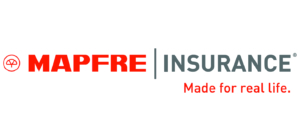Questions?
MAPFRE USA Benefits Service Center
800-579-0889
After-tax basis
You pay for certain benefits with after-tax dollars that come out of your pay after all applicable taxes have been determined and withheld.
Beneficiary
The person or persons you designate to receive payment of your life and accidental death and dismemberment (AD&D) insurance or 401(k) savings in the event of your passing. With the exception of 401(k), you can name anyone as your beneficiary, and you can change your choice at any time. If you do not have a primary and/or contingent beneficiary at the time of your death, or if your beneficiary dies before you, your insurance will usually be paid in a lump sum to the survivors listed below in the following order of priority (see the SPD for details):
- Spouse
- Child(ren)
- Parents
- Siblings
- Your estate
Coinsurance or cost sharing
This is the portion of covered health care costs for which you are financially responsible after meeting any applicable deductible. For example, the plan may pay 80% of the cost of a service and you would pay the remaining 20%.
Deductible
The out-of-pocket amount you must pay each plan year before the plan pays for eligible benefits.
Domestic partner
Benefits are available to same-sex and opposite-sex registered domestic partners of benefits-eligible employees. A domestic partner is defined as a person with whom the employee resides and with whom the employee has filed a Declaration of Domestic Partnership with MAPFRE.
Eligible dependents
You may enroll these eligible dependents:
- Your spouse or domestic partner
- Your dependent natural, adopted, foster or court-ordered stepchildren up to age 26
- Your unmarried child who is 26 or older and is incapable of self-support because of a mental or physical permanent disability
- Your domestic partner’s children up to age 26
Emergency
A serious medical condition or symptom resulting from injury or illness that arises suddenly and requires immediate care and treatment to avoid endangering life or health.
Evidence of Insurability (EOI)
This is sometimes called “proof of good health” and is used to qualify for certain amounts of life insurance coverage. You will need to complete an EOI form if you choose to increase your life insurance coverage.
Formulary
A formulary is a list of medications covered by your prescription plan. If you use a medication that is not on your plan’s formulary, you may be required to pay the full cost. To view the formulary for your plan, visit the plan’s website.
Generic
A generic drug is one that is no longer produced only under a brand name. Once a drug’s patent expires, many companies can begin to manufacture “generic” versions of a previously brand-name-only drug. Generic drugs are identical to brand-name drugs in chemical makeup (“active ingredients”), usage, strength and dosage. They are regulated and approved by the FDA, just like brand-name drugs. The price you pay for generic drugs is less than you would pay for brand-name or formulary drugs.
In-network provider
A provider who has contracted with a health care plan (a medical, dental or vision plan) and has agreed to certain rates. In most cases, you pay less and receive a higher benefit when you use in-network providers. Check with your plan for coverage details.
Negotiated rates
The costs for health care services negotiated between the insurance carrier and in-network health care providers. Negotiated rates are usually less than usual, customary and reasonable (UCR) charges.
Out-of-network provider
A provider who has not contracted with a health care plan (medical, dental or vision plan) and has not agreed to certain rates. In most cases, you pay more and receive a lower level of benefits when you use out-of-network providers. See your plan for coverage details.
Out-of-pocket maximum
The maximum amount you could pay in any plan year. Eligible expenses above this amount are typically paid by the plan.
Plan year
MAPFRE’s plan year is January 1 through December 31. You cannot change coverage in some of the benefit plans during this period, unless you experience a qualifying life event.
Preferred brand name
A preferred brand-name drug may have a lower cost than a non-preferred drug because it has been identified by the plan as more cost effective. You can find out how different drugs are classified by your plan by visiting the plan’s website.
Pre-tax basis
You pay for these benefits with pre-tax dollars that come out of your pay before federal income and Social Security taxes are withheld—and, in most states, before state and local taxes are withheld. This gives your contributions a special tax advantage and lowers your taxable income, thereby lowering the actual cost to you.
Qualifying life event
Qualifying life events include:
- Change in legal marital status, such as marriage, divorce, dissolution of a domestic partnership, or death of a spouse or domestic partner
- Change in the number of dependent children due to birth, adoption, placement for adoption or death
- Change in court-ordered coverage for dependents
- Change in employment status, such as termination or commencement of employment by you or your spouse/domestic partner and dependents
- Change in dependent eligibility under your current coverage
- Change of residence or worksite for you or your spouse/domestic partner and dependents that result in changes to your eligibility for a benefit
- Significant change in health coverage due to spouse’s/domestic partner’s gain or loss of employment
You may make changes to your coverage when you have a qualifying life event; however, you must do so within 31 days of the event.
Specialty drugs
Specialty drugs require special handling, administration and/or monitoring. They are typically used to treat complex or chronic conditions. Visit your plan’s website for more information on specialty drug classifications.


mapfreusa.com